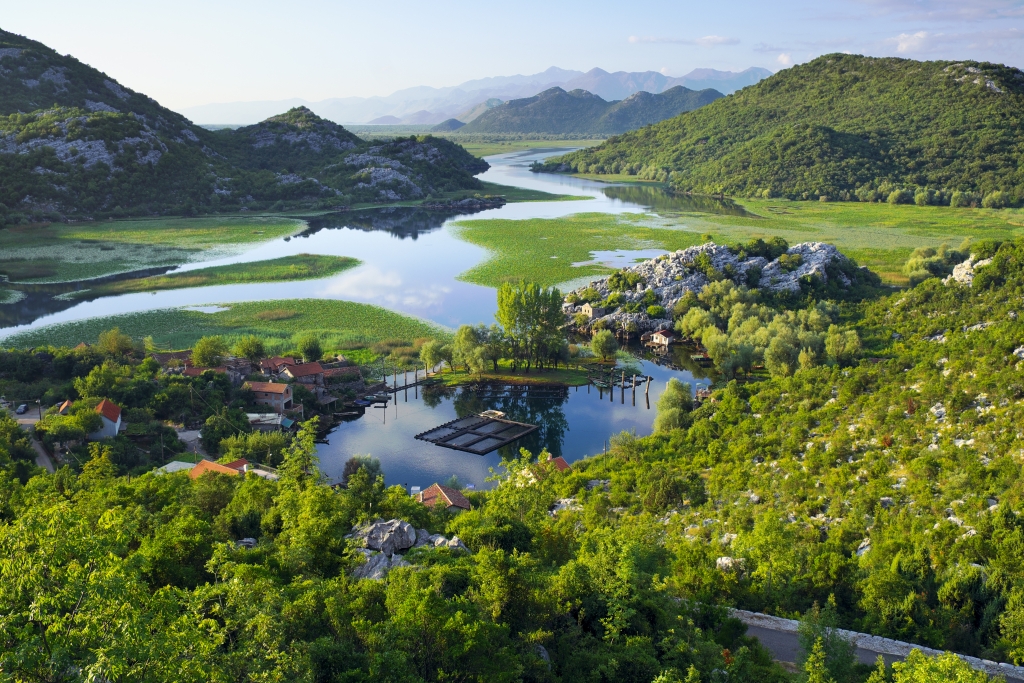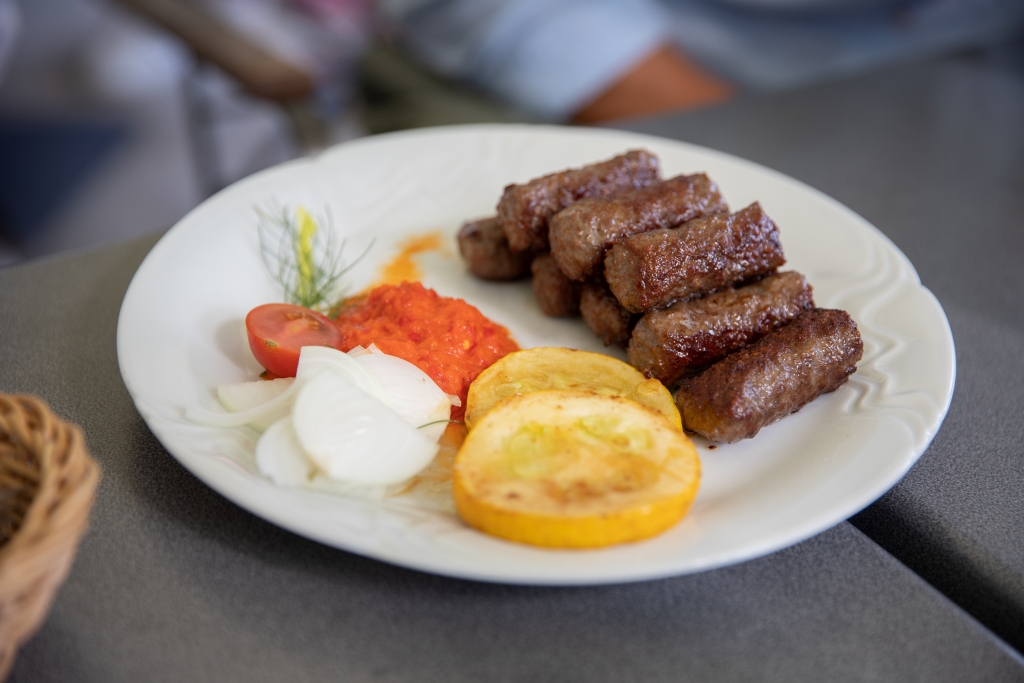Visit Podgorica
The pocket capital of Montenegro isn’t the most popular tourist destination on the map, but it has charm. Located in the heart of Montenegro, Podgorica is usually the starting point of every Montenegrin visitor, but not many of them stay for long in the city. Long and interesting history, great geographic location and luscious parks are just some of the reasons why you should visit Podgorica. If you find yourself cruising through the Balkans, here is a guide with useful information for getting to Podgorica and what to do once you are there!
Table of Contents
How to get to Podgorica
Podgorica’s location in the middle of Montenegro puts it at the crossroads of many important routes. Due to this, it’s relatively easy to reach Podgorica by car, bus or plane.
By bus
Podgorica is the main bus hub of the country, with numerous connections to Serbia, Croatia, Albania and other countries. Buses to Podgorica depart from several cities in the region such as Dubrovnik, Split, Zagreb, Belgrade, Tirana, Sarajevo etc.
From Podgorica, you can reach any other part of Montenegro, such as Budva and Kotor with a bus. Podgorica’s main bus station is located about 1000 m from the town centre, which is only a 13-minute walk. If you would rather take a bus to the city centre, bus lines 2-3 and 6 will take you there.
By car
If travelling by car, you can reach Podgorica from several directions. Main transit routes are the following:
- north (E65, E80), towards Belgrade and Central Europe,
- west (E762), towards Nikšić, Bosnia and western Europe,
- south (E65, E80), towards the Adriatic coast and
- east (E762), towards Albania.
By Plane
Podgorica Airport (TGD) is situated 11 km southwest of Podgorica, on the road to Bar. It’s also called Airport Golubovci after the small town of Golubovci in the immediate vicinity of the airport.
Podgorica Airport is connected with major European cities with international flights. In Montenegro, there are no domestic flights because the only other airport in Tivat is just 80 km away.

By Train
Podgorica is a stop on the Belgrade-Bar railway, the most important train route in Montenegro. The Belgrade-Bar railway is a part of the European railway network which means that you can reach Podgorica by train from anywhere in Europe. Additionally, the scenery is spectacular as you are surrounded by Montenegrin mountains during your journey.
The central railway station of Podgorica is nearby the main bus station, about one kilometre from the city centre.
What to see and do
Podgorica is a town with beautiful nature and rich history, once recognized as a city with the most greenery in Yugoslavia,
Here are the most important sights of Podgorica you should check out during your visit.
Stara Varoš
In 1474., The Ottoman empire captured Podgorica. This marked the beginning of a new era for Podgorica which would last for the next four centuries.
When the Ottomans came they brought along their culture and architecture. Unfortunately, most Ottoman buildings have been destroyed during the bombings of Podgorica in WWII. However, some buildings still remain in the old Ottoman-era neighbourhood of Podgorica, called Stara Varoš.
In Stara Varoš, you can see the following sights:
- Sahat kula (Clock Tower of Hadži-paša Osmanagić)
- The Natural History Museum of Montenegro
- Ribnica fortress (Depedogen)
- Osmanagića and Starodoganjska mosques
- The Old Bridge over the Ribnica (Adži-paša’s bridge)
Duklja and Medun
The history of Podgorica goes all the way back to ancient Illyrian and Roman times.
3 kilometres north of Podgorica is an archaeological site of Duklja (Doclea). Doclea used to be the largest settlement of the Illyrian tribe Docleatae, a rather large town of 8,000 to 10,000 inhabitants for standards of the time.
There is another ancient settlement called Medun (Medeon) about 13 kilometres north of Podgorica. Medun was built around the 4th and 3rd centuries BC and its defensive walls are partially preserved to this day.
Niagara falls
On the river Cijevna, you can find Montenegrin Niagara falls, named after the famous waterfalls in Canada. Niagara falls in Montenegro are much smaller, but beautiful nonetheless.
They are located about a 15-minute drive from the city, and you will need a car as there is no public transport.
Near the falls, there is a restaurant “Niagara” with great views, calming ambience and tasty traditional dishes.

Millenium bridge
In contemporary times, there are a couple of landmark buildings worth pointing out. First and foremost, the Millenium bridge over river Morača. This 173 meters long suspension bridge is a true delight for fans of architecture and a symbol of Podgorica.
Parallel to the Millenium bridge, there is a pedestrian-only Moscow bridge which is a perfect place to sit and enjoy the view.
Near the bridge, you should check the Vladimir Vysotsky Monument. Vysotsky was a Russian singer and songwriter who fell in love with Montenegro, its beauty and its culture.

Cathedral of the Resurrection of Christ
There are plenty of Orthodox churches in the town, but one that stands out is the newly built Cathedral of the Resurrection of Christ. Opened in 2013, after 20 years of construction, this church is probably the most beautiful one in Podgorica, maybe even in the whole of Montenegro.
The unique exterior of the church attracts many viewers, but the interior might be even more beautiful. Inside the church is filled with iconographic murals with gold backgrounds, marble floors and furnishings.

The Church of the Holy Heart of Jesus
Due to bombing during the WWII, communist-style architecture is the most predominant style in Podgorica. This style of architecture, also known as brutalist architecture, is characterized by a minimalistic approach to decorative design, featuring only bare materials and structural elements. Buildings are often built-in angular geometric shapes.
A great example of this style is the only catholic church in the city, The Church of the Holy Heart of Jesus built-in 1969. This odd-looking church and its huge bell tower look more like a bunker and a watchtower than a religious building.
Petrović Palace
The former winter castle of King Nikola I Petrović is surrounded by a beautiful park forest and is one of the favourite places for locals.
Since 1985, parts of the palace have been converted into The Montenegro Contemporary Art Center which houses about 1,500 works of art. It is not uncommon to see open-air art exhibitions hosted in the park during the summer months.
Palace was built in 1891 and has the status of a cultural monument.
Day trips from Podgorica
With its favourable location in the middle of Montenegro, there is a bunch of interesting places you could visit within an hour or two from Podgorica. Here are our top 3 day trips from Podgorica.
Kotor
If you are in Montenegro, you must visit Kotor! A clear, blue sea overlooking the steep mountains coupled with rich cultural and historical background makes a great combination.
The Old Town of Kotor is a UNESCO World Heritage Site full of sights worth seeing. An essential thing to do is walk around the 4.5km long city wall which leads to the Fortress of Kotor. At 280 meters above sea level, the fortress offers incredible views of The Bay of Kotor.

Budva
Budva, the pearl of Montenegrin Adriatic coast, is located about an hour to an hour and a half from Podgorica. Often called ‘Miami of Montenegro’, Budva is a small place with vivid nightlife and plenty of beaches. This medieval city is more than 2,500 years old, making it one of the oldest settlements on the Adriatic coast. The most beautiful part of the town is the Old town, situated on the small peninsula in the centre of the city.

Lake Skadar
Lake Skadar is the largest lake in Southern Europe, with ⅔ belonging to Montenegro and ⅓ belonging two Albania. The lake is one of the most important bird habitats in Europe, with more than 270 different species living there. Besides birds, there are also plenty of fish, snails and insect species. A lot of those species are endemic to the lake.
The Montenegrin side of the lake is the most visited national park in the country. The best way of exploring the lake is by boat from the nearby village Virpazar.

What and where to eat
Balkans are known for their laid back atmosphere, welcoming people and great food, and Podgorica is no exception.
The people of Podgorica love their leisure and peace of mind. They usually start their mornings with a coffee in one of many cafes in the city centre, on the Independence square or Njegoševa street.
You could eat Burek for breakfast or brunch, a delicious crispy pastry filled with mincemeat, cheese, or spinach.

For an authentic Podgorica experience, you should book a wine and food tasting tour in one of the many wineries in Zeta valley. There you will try some of Montenegro’s best wines, accompanied by delicious local cheese and pršut. Pršut is dry-cured ham, served uncooked, similar to Italian Prosciutto.

We also recommend you to visit “Pod Volat” restaurant in Stara Varoš. Pod Volat is highly recommended because of its huge portions and amazing prices.
Čevapi is a popular local dish you could try there. Čevapis are small finger-like sticks made from minced meat of various kinds served with chopped onions, kajmak (creamy dairy product), and ajvar (pepper-based condiment popular throughout the Balkans).

When the night falls, Podgorica comes alive. Locals meet in the centre to hang out with their friends and have a few drinks. Bars in Podgorica are normally open until 1 AM, while clubs in Podgorica are open until 3 AM or sometimes longer.
If drinking, try Rakija. Rakija is a traditional spirit that comes in many different flavours, depending on the fruit used to brew it. But be careful as Rakija has a high percentage of alcohol and hits quickly!
Accommodation
Unlike more popular towns on the Adriatic coast, Podgorica is rarely booked to its capacity. Due to this, finding accommodation in Podgorica is easy as there are plenty of hotels, B&Bs, hostels.
Wherever you find accommodation in Podgorica, it shouldn’t be too hard to explore the city because Podgorica is not that big. However, some neighbourhoods are more popular among tourists than others are.
The obvious choices are Drač and Stara Varoš neighbourhoods located near the historical centre of the city and plenty of Ottoman-era landmarks. This is a peaceful area of town, great for exploring by foot and with many cafes and restaurants.
Two more great neighbourhoods to stay in are New Town (“Novi grad”) and Downtown Podgorica. These two neighbourhoods are where most of the action happens in the town. They are full of cafes, restaurants, bars and clubs. These two are next to each other and connected by the already mentioned Millenium bridge.
Besides these, there are plenty of great places to stay around the city. Don’t be reluctant to reserve the accommodation you like as Podgorica is easily explored by foot and public transport.






